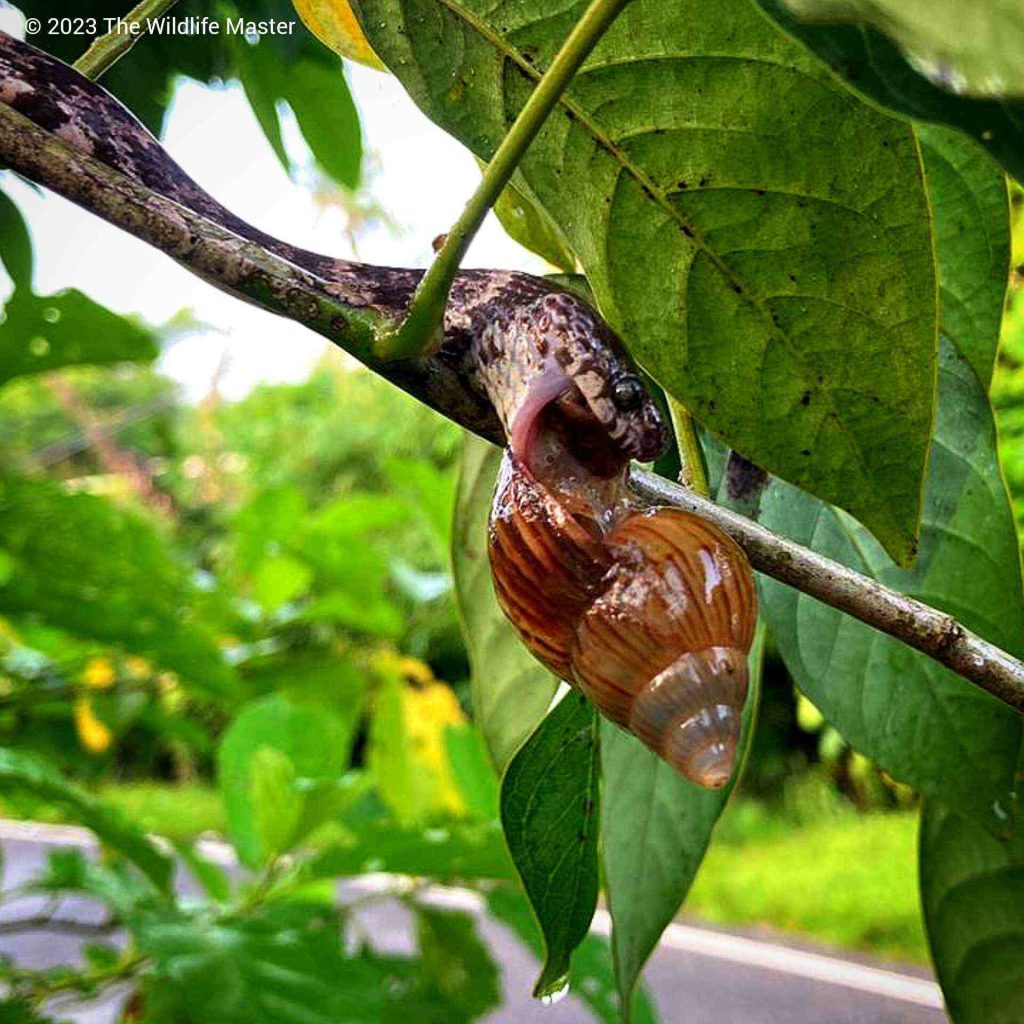Mr. Tzarael Prime, Wildlife Enthusiast, Nature Explorer and Tour Guide
Invasive species, such as the Giant African Snail (GAS) Achatina (Lissachatina) fulica (Bowdich), arrive and thrive in their non-native range partly due to the non-existence of natural preys to keep their population in check. As a wildlife enthusiast, I have seen several birds as well the native Galap or painted wood turtle (Rhinoclemmys punctularia) and even the manicou or common opossum, also called the southern or black-eared opossum or gambá. Trinidad is also home to the Slug-eating Snake (Sibon nebulatus) which feeds only on Slugs and Snails. I have not been fortunate to have my camera with me in witnessing instances some of these species preying on the GAS. However, I was on hand with camera to take a photo shown here of the slug eating snake preying on GAS. I will continue to be vigilant in documenting instances of the species mentioned above to highlight instances of other species preying on GAS.

The slug eating snake feeds mainly on the slugs and snails native to its habit. With sighting of the Giant African Snail in Diego Martin on October 2008 followed by the rapid spread across the country considerable resources have gone into the control of the invasive GAS. The purpose of this short note is to raise awareness of one of our native species, the slug eating snail, that can provide some control of this species. Please don’t kill our snakes as they are useful in controlling other harmful species such as the GAS.
Nature enthusiasts especially ones interested in herpetology thought that the Slug-eating Snake (Sibon nebulatus) and the Trinidad Snail-eating Snake (Dipsas trinitatis) could be good predators for this infestation of Giant African Snail (Lissachatina fulica) but there were some problems, as areas where the Giant African Snail population were spreading there weren’t a large presence of either species of snakes. Also, there were no documentation of the two species, the Snail or the Snakes, interacting or encountering one another. Evidence was needed to confirm this possibility.
With time, the GAS began to spread, eventually into the range of the slug eating snakes. On July 16th 2023 06:47am, not far from the La Fillette Community Center, Benji and I documented the first case of a Slug-eating Snake gorging on a couple of Giant African Snails. We also witnessed a couple of empty shells right under the spot where the snake was feeding.
The Slug-eating Snake has specialized Jaws designed to scoop the snails out of their shell, and judging by the two bulges in the belly it looked like the snake fed on a couple of Snails through the night, oh and there were some Snake poop around the area. This Slug-eating Snake was 23 inches long and the Giant African Snail shell was 2 inches in diameter. This first case, we now know with certainty, that the Slug-eating Snake will feed on the Giant African Snail if the opportunity arises. To what extent they will provide control is yet to be determined but it’s a good sign that the GAS may not flourish in our forested or biodiverse areas.